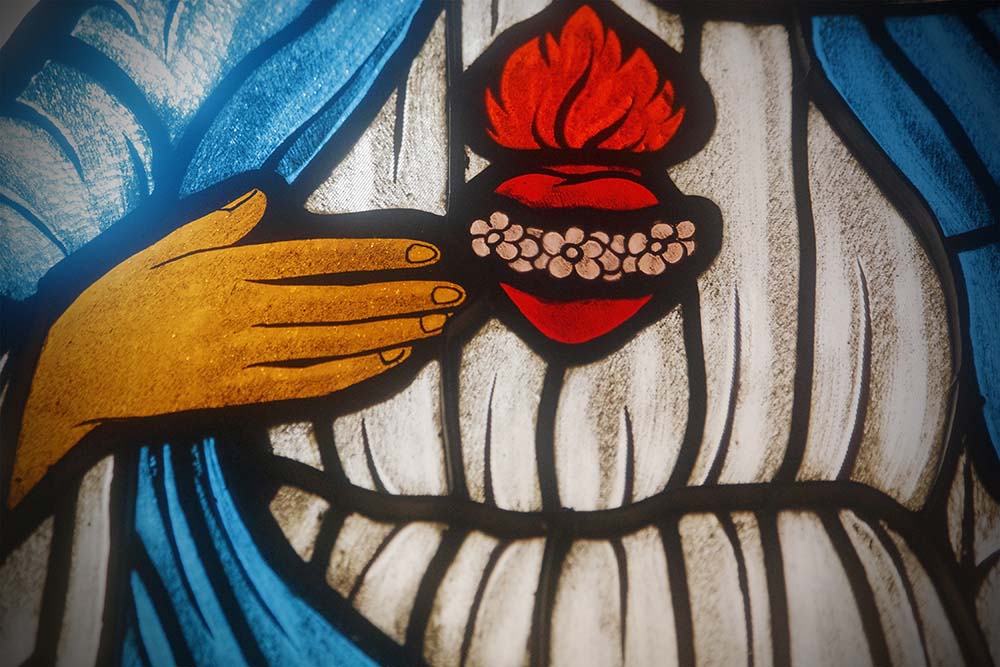In the fourth week in Lent, we look especially to the fourth line of the Sarum Prayer. Let us pray.
God be in my head — and in my understanding
God be in my eyes — and in my looking
God be in my mouth — and in my speaking
God be in my heart — and in my thinking (Repeat 10X)
God be at my end — and in my departing.
When first introduced to this prayer-poem, I thought the first and fourth line needed to be swapped, like so,
(1) “God be in my head — and in my thinking”…
(4) “God be in my heart — and in my understanding.”
That’s because this prayer is over 500 years old, and I’m interpreting it with a 21st century perspective. It’s natural to automatically apply the context we know best to something we’re exploring. However, this line loses its richness if we fail to understand how it came to be written originally.
One of the things I love most about this book we’ve studied during Lent is the context its author gives us. The Rev. Ken Wilson looks behind the scenes to give us a deeper understanding of this lovely yet powerful prayer in God be in My Head: The Sarum Prayer.
We view our heart as our center of feeling, but thankfully Ken reminds us that in earlier times people interpreted the workings of the human body differently. Our heart is the major organ that anchors our “north-south” super highway of nerves, blood flow, and fuel conversion. Ken’s research even mentions that the embryo’s indistinguishable cells forming the brain and heart are finally assigned according to their migration up or down as our bodies come into being. They’re the same kind of cell in the beginning.
There’s a famous, very effective prayer, practiced particularly by the orthodox Christian traditions known as the “Jesus Prayer.” It comes from a gospel story, “Jesus, Son of David, have mercy on me, a sinner.” It is said over and over. Some orthodox monks and nuns pray this prayer hundreds or thousands of times daily.
This meditative practice is thought to induce an experience described by the phrase, “descending with the mind into the heart.” The pray-er of the Jesus Prayer would, by means of the prayer, calm their clamoring thoughts, and with a little patience, sense a downward slide of their “center of awareness” from the head, and gradually, into the heart — and by heart here, they mean the beating center located in the chest. Once there, a kind of prayerful thinking would take place — more visual or affective than word-based thinking, a thinking with a different kind of fruitfulness than ordinary cognition (63, my emphasis).
I think of this as a way for the heart to pray if it had the ability to form and say words as the brain and mouth do. But, it’s slower, more mindful, and less cluttered than what goes on in our heads. This also gives insight into, “God be in my head — and in my understanding.” We ask God to help us sort out the “wheat from the chaff” in our heads — to separate out what’s important and understand it through cognition.
The fourth line, “God be in my heart — and in my thinking,” empowers our compassion and care for others by directing our hearts to be concerned with what is most important. It’s more visceral. This line is so aware of the whole body and that the brain and heart are connected, but our “compassion center” must lead the way for us.
In my opinion, this prayer works in descending order of importance. And in the end, it’s our acts of compassion and love, the works of the heart, that count the most before and as we depart this earth. Our “heart’s decisions” become our legacy.
Ken notes that research shows that while we may have logical thoughts, our emotional system has already been involved, and we are often unaware of such activities. And so our foremothers and forefathers who prayed this prayer were not as ignorant as we tend to believe about people who lived before the Enlightenment and the emergence of the sciences. “Thinking” in the “feeling-heart,” was ahead of its (medieval) time (68)!
So before we get all high on ourselves for what awesome rational thinkers we are, let us remember our predecessors who modeled a spiritual understanding of the heart’s thinking. What a gift from them!
And, when we’re stuck on something that has our brain in twist, and keeping us awake at night, why not say this prayer that basically, as Ken says, is a humble request for a divine nudge to help us sort it out (71). Makes perfect sense to me.
Since it’s St. Patrick’s Day, I’ll share a favorite Celtic hymn that I listen to when I need guidance and direction. It reminds me of the Sarum Prayer in its simplicity and humble intent. This gentle and lilting tune always makes me feel better and gives me a divine nudge to answer my vocational and spiritual calls.
Here’s a video of a beautiful choral arrangement with the lyrics of Be Thou My Vision:
Enjoy.
And so I leave you once more with this poetic, prayerful gem…
God be in my head — and in my understanding
God be in my eyes — and in my looking
God be in my mouth — and in my speaking
God be in my heart — and in my thinking
God be at my end — and in my departing





